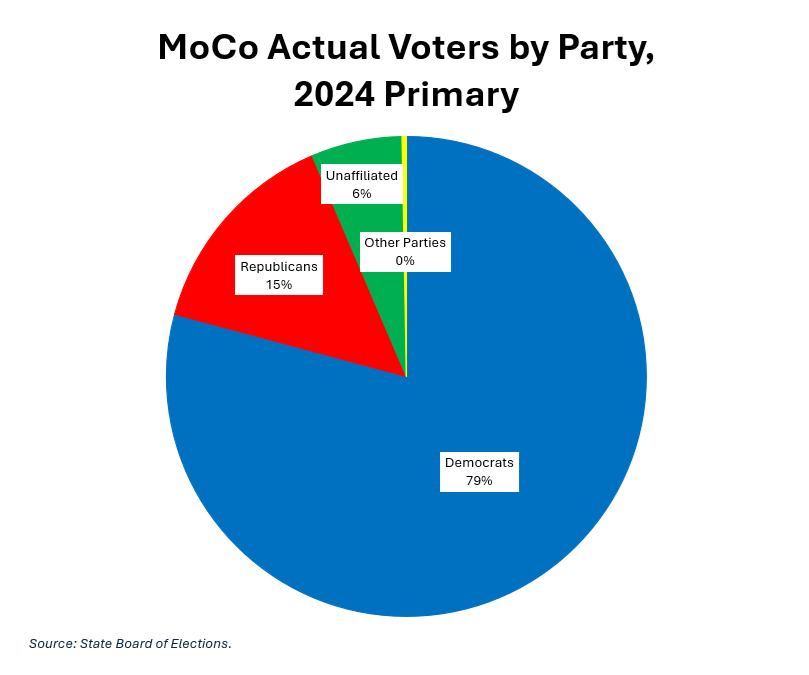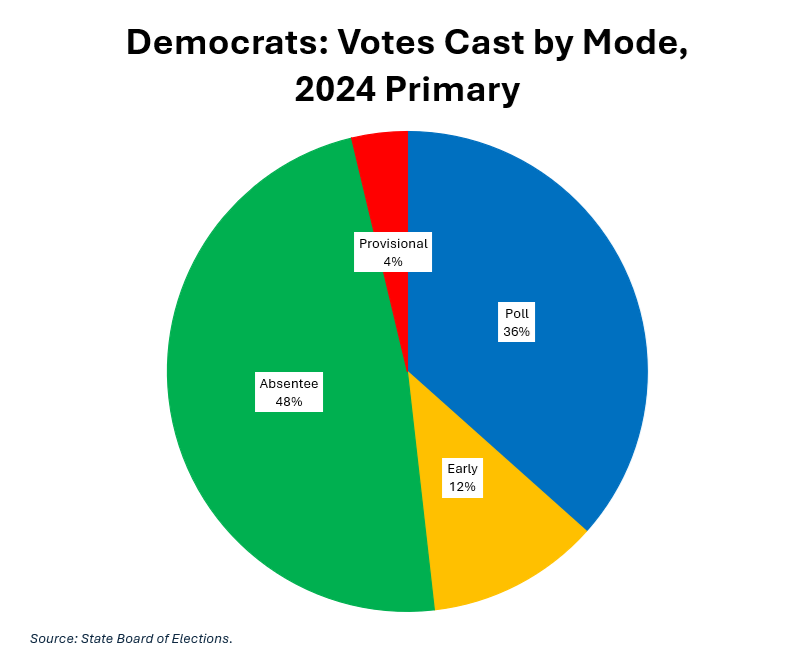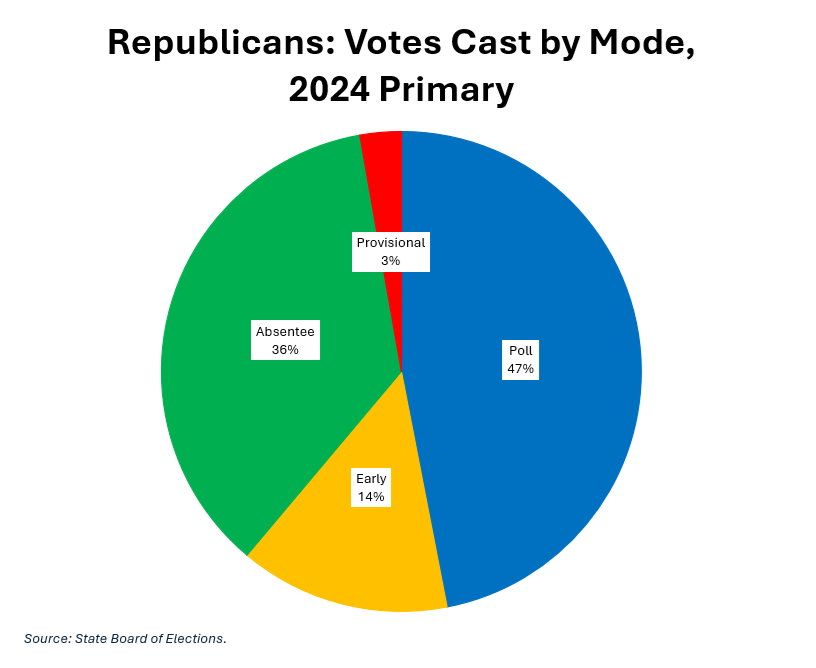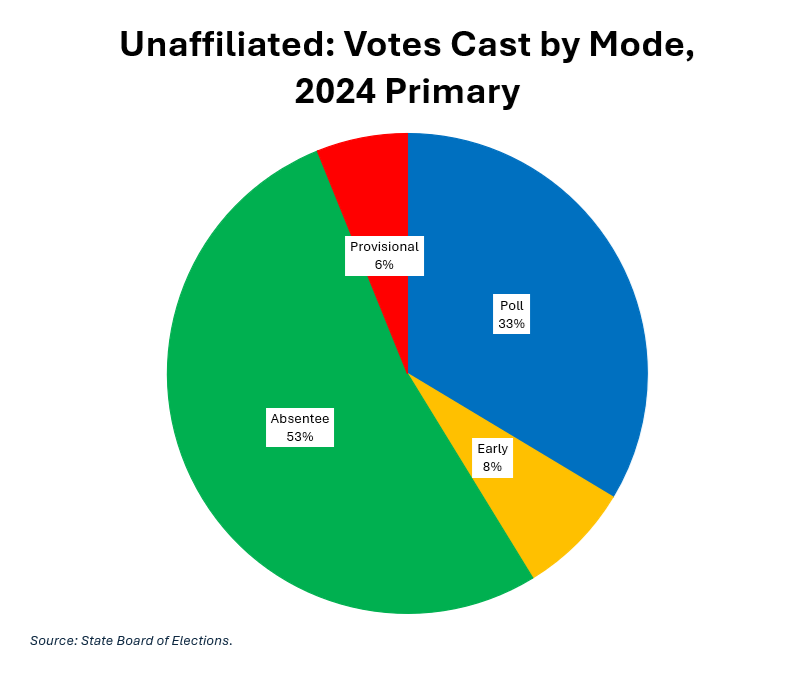By Adam Pagnucco.
Precinct data for the 2024 primary election is out and we will be analyzing it over the course of several posts. Let’s start with turnout.
The pie chart below shows the distribution of actual voters (not registered voters) in Montgomery County’s 2024 primary.

MoCo is dominated by Democrats and that was especially true in the primary. While the presidential primary was never in question, MoCo Democrats were called on to decide hard-fought races for U.S. Senate and Congressional District 6. (Republicans had their own fiercely contested primary in the latter race.) We will get to turnout rates soon, but’s first let’s consider voting modes.
The pie chart below shows the distribution of voting modes by Democrats.

Nearly half of MoCo Democrats cast their ballots by mail, demonstrating the permanent popularity of mail in the wake of the pandemic. Election day was next with more than a third of votes cast.
Now let’s look at MoCo Republicans.

Republicans’ voting mode shares are the inverse of the Democrats. Nearly half of MoCo Republicans voted on election day and more than a third voted by mail.
Now to unaffiliated voters.

An absolute majority of unaffiliated voters cast their votes through mail. Their mode choices resemble Democrats more than Republicans.
The choice of voting mode is one of the biggest changes I have seen in local elections over the last two decades. In MoCo’s 2006 primary, the first local election in which I volunteered, 87% of votes were cast on election day, 8% of votes were cast by provisional ballot and 5% of votes were cast through mail. Early voting did not exist. Now mail is the most popular voting mode, at least among Democrats and unaffiliated primary voters, and early voting is too widely used to be ignored.
This change has caused campaigns to behave differently. The choice of timing with paid communications is one of the most important decisions that any campaign can make. In the old days, most mail – which was back then the dominant form of mass communications by most local campaigns – was sent within two or three weeks of election day. This year, voters began receiving mail ballots six weeks before election day. That stretches out the comms calendar and makes resource deployment decisions more complex than they were 20 years ago. Campaigns that raise money early and closely understand voting modes – and especially which voters pick which modes – have an advantage over those who are ignorant of such patterns.
We will study turnout rates by party and region next.
